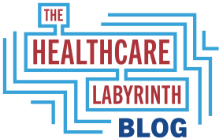Kaiser Health News recently did a piece on what a second Donald Trump term would mean for healthcare. It was a good piece and there is a link at the bottom of this story. That prompted me to do my own evaluation of the prospects of what might happen in Trump 2. After all, lawsuits and indictments do not appear to be impacting the president’s standing in the GOP primary polls, but we will see what New Hampshire brings with candidate Nikki Haley closing in on Trump. In the general election polls, Trump and President Biden are neck and neck.
To be fair to the former president, his tenure on healthcare was a mixed bag. As a bit of an atypical Republican, he ventured into areas not usually seen. Here are some major areas I would call out as the good and then the bad and ugly.
The Good
Price transparency
Trump did push for price transparency. While the program matured under Biden, Trump began the crusade to have hospitals and health plans post prices. This was an important act for a few reasons. While the prices will not immediately clear the fog around price in the system, it gives academics and researchers the chance to really understand what is happening in the market. What we know so far is that prices vary a great deal between regions of the country. Further, even within regions, prices can vary between hospitals and even among insurers. See my earlier blog on price transparency here: https://www.healthcarelabyrinth.com/the-importance-of-price-transparency-in-healthcare-reform/
Over time, technology will make it easy for Americans and their providers to view price, cost-sharing responsibilities, and how various sites of care are less costly overall and from an out-of-pocket standpoint. This could move costs down dramatically.
No Surprises Act
While more of a congressional initiative, Trump did sign into law the No Surprises Act (NSA) in the twilight of his administration. The NSA requires providers and payers to make costs available to consumers prior to major surgeries. It also barred most surprise bills from emergency and scheduled surgeries. In-network cost-sharing applies to these situations. Health plans and providers now must negotiate reimbursement or go to arbitration. The rollout of arbitration has been a disaster. The congressional compromise does little to truly control costs as it favors providers (yet the providers continue to sue) but does shelter consumers from most bills.
Medicaid during COVID
Trump did support and sign legislation that increased federal funding to states in Medicaid during the COVID pandemic. In return, states had to maintain people on Medicaid for the duration of the pandemic.
Medicare Advantage
The Trump administration was a staunch supporter of the private alternative to Medicare fee-for-service (FFS) traditional program, Medicare Advantage (MA). The administration expanded supplemental benefits and made some important Part D benefit reforms, including addressing the so-called donut hole and reduction in insulin prices.
Drug pricing
Very surprisingly, Trump came out in favor of drug price reforms. He proposed that international reference pricing (IRP) be used for Medicare Part B drugs. International reference pricing is where a country either sets its nation’s prices based on other countries’ prices or uses those prices as a barometer in negotiations with drug makers. Specifically, Trump used the Most Favored Nation (MFN) concept within IRP where the U.S. price would be pegged at the lowest price in a comparable developed nation. It was poorly conceptualized, however, in that it would have put a major burden on certain organizations to negotiate upfront before the MFN trigger. A court stopped implementation over rule-making concerns. The Biden administration pulled back the regulatory proposal by Trump due to the negotiation issue as well as concerns regarding how the rule was issued.
At various points in time, Trump advocated international reference pricing for both Part B and D drugs in Medicare. In the end, his administration never quite pulled the trigger on such reforms. More important, Trump often equivocated on whether he was truly on board for such changes. When Medicare price negotiations were being hotly debated, his own Council of Economic Advisers attacked a Congressional Budget Office (CBO) analysis that suggested there would be modest impact on drug innovation if the concept passed.
Trump also wanted to have drug prices disclosed in drug maker ads, which was stopped by a court as well.
In the end, it is hard to tell what Donald Trump you might get on drug pricing.
You can see my earlier blogs on drug pricing here:
https://www.healthcarelabyrinth.com/the-insanity-of-drug-pricing-and-shortages-a-christmas-story/
Rebate reform
The Trump administration also proposed to end rebates in the Medicare Part D program by removing the safe harbor exception for such negotiated retrospective discounts, with the goal of pushing all discounts at the point of sale. Such discounts would be allowed upfront and was meant to give consumers relief at the pharmacy and benefit from discounts. The rule was again held up in court over rule-making issues. The Biden administration extended implementation deadlines and chose not to move forward for various reasons, including costs to the government that would have resulted as well as potentially higher Part D premiums to consumers. Rebates are actually used in part to reduce other Part D spending and premiums.
Drug importation
The Trump administration started the process to allow states to import drugs from Canada on a wholesale basis. The final approval only came recently under the Biden administration. The jury is out on how much impact this will have.
ICHRA
Trump supported the ability for employers to give workers tax-free dollars for premiums under health reimbursement arrangements (HRA) rules for the individual purchase of healthcare. This is known as ICHRA. Ironically, I see this arrangement as a way to lower health costs by having ICHRA dollars used in the individual Exchanges.
Site neutrality
Trump’s administration championed site-neutral payments in Medicare and expansion of what could be done in ambulatory surgery centers (ASCs). These efforts were in part pulled back by the Biden administration for a number of reasons. A House bill recently would have mandated site-neutral payments for Part B drug administration in Medicare.
The Bad And Ugly
Exchange enrollment
Early on, the Trump administration pulled back on assistance to help drive enrollment in the Exchanges. It reduced the open enrollment period and limited outreach and marketing dollars. He also stopped funding the cost-sharing reduction (CSR) subsidies, leading to immense premium increases as plans still had to offer CSR plans. He also supported the eventual repeal (in truth a zeroing out) of the individual mandate.
Medicaid
The Trump administration also opposed most Medicaid expansions and worked with states to institute work requirements, limits to benefits and coverage, and greater state flexibility. Mind you, I don’t love work requirements and hate efforts to limit Medicaid uptake, but I do argue that in a state-federal partnership program states should be allowed to set their own agenda within reason. Trump did approve a Georgia waiver that expanded Medicaid to 100% of the federal poverty limit based on family size but also imposed work requirements on many. That waiver was pulled back by Biden but Georgia successfully fought in court for the waiver’s implementation. It recently rolled out.
Trump administration budgets also proposed to limit Medicaid spending and eligibility.
ACA repeal
Trump recently promised to repeal the Affordable Care (ACA) again. In a series of Truth Social polls, Trump surprisingly went back to the issue of repealing the historic act, which now covers over twenty million people in the Exchanges and well over twenty million through Medicaid expansions.
Trump never produced his own coverage plan when he worked with Republicans who then controlled Congress in 2017 to repeal the act. It failed by one vote in the Senate when the now deceased Sen. John McCain cast the deciding vote. But Republicans had a series of reforms they wanted, including block grants to states for coverage, funding for high-risk pools, and expansion of skimpy benefit plans. The Congressional Budget Office (CBO) indicated at the time that the uninsured rate would not go down, but up.
As the Kaiser article notes, that factored into Republicans losing at the polls in 2018. It is a mystery to me why he would raise repeal again, especially given the stability of the program and enrollment numbers.
Conclusion
I tried to be fair here. While the good list appears longer, the fact remains that it is unknown if Trump would really follow through on drug price changes and his bad list revolves around big issues that would impact coverage.
Suggested reading:
https://www.kff.org/health-reform/issue-brief/president-trumps-record-on-health-care/
#healthcare #healthcarereform #coverage #trump #pricetransparency #nsa #nosurprisesact #surprisebilling #pricertransparency #transparency #medicaid #medicareadvantage #partd #drugpricing #rebates #drugimportation #ichra #siteneutral #exchange #aca #obamacare
— Marc S. Ryan





